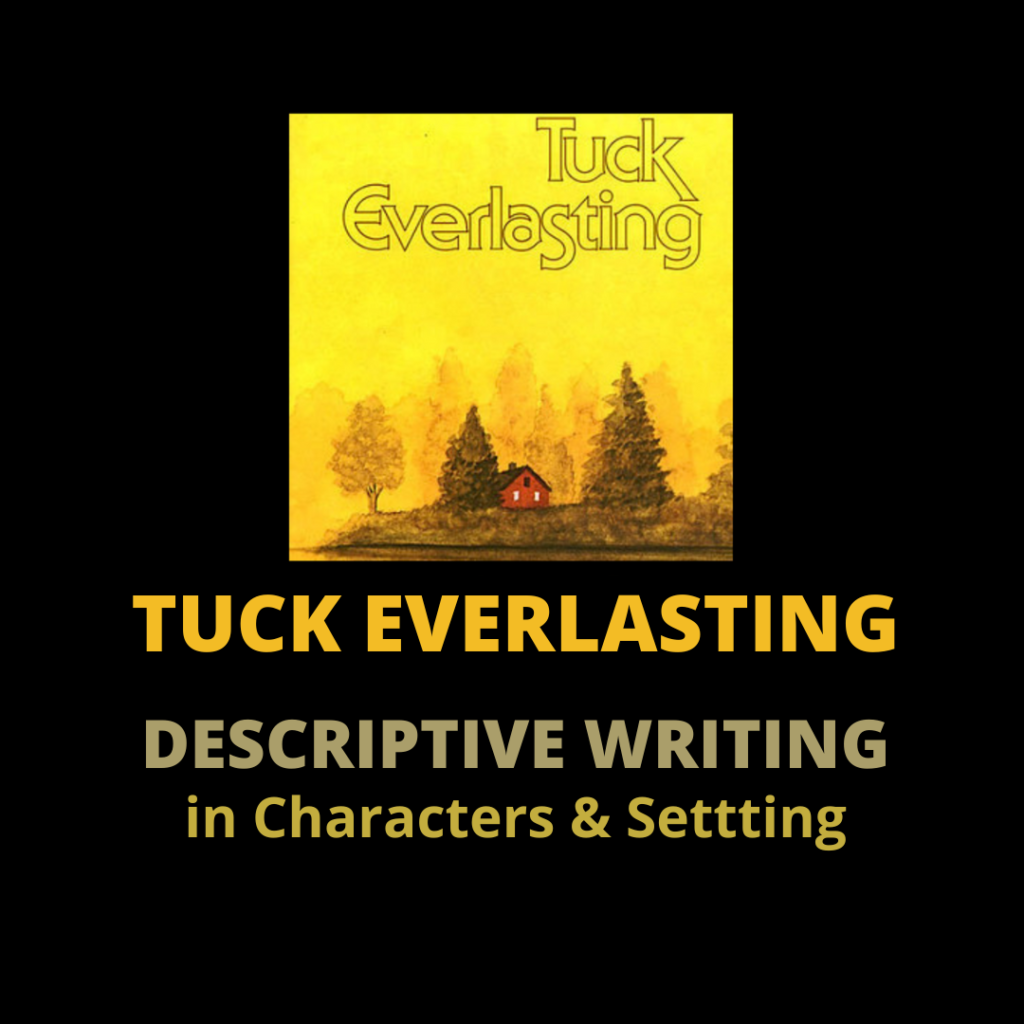
Many of us write, but few of us create literature. Natalie Babbitt’s Tuck Everlasting is literature. She had created literature before Chapter 1 of the book, Within a few words, Babbitt writes volumes–in the Prologue. Within a few words, Tuck Everlasting had become more than a mere spattering of words. Natalie Babbitt said the following about words:
“You really have to love words if you’re going to be a writer, because as a writer, you certainly spend a lot of time with words.”
― Natalie Babbitt, Tuck Everlasting
Beyond a love of words, however, a good writer must learn to USE those words so that they can become more than a string of words. I agree with Babbitt that the best way to learn to USE words is by reading great literature:
“What is your suggestion for someone who wants to start writing? Be a reader. It’s the only real way to learn how to tell a story.”
― Natalie Babbitt, Tuck Everlasting
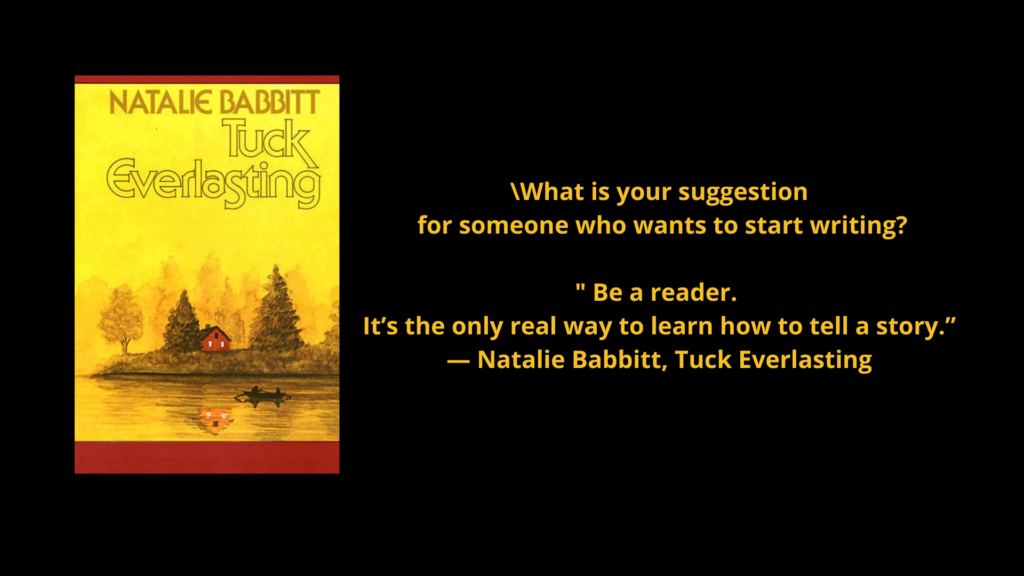
The book Tuck Everlasting begins in the month of August, and for that reason, I have elected to begin sharing my thoughts about Tuck on August 1.
Before I begin that process, however, I want to introduce you to Natalie Babbitt:
Natalie Zane Babbitt (née Moore; July 28, 1932 – October 31, 2016) was an American writer and illustrator of children’s books. Her 1975 novel Tuck Everlasting was adapted into two feature films and a Broadway musical. She received the Newbery Honor and Christopher Award, and was the U.S. nominee for the biennial international Hans Christian Andersen Award in 1982.[2] Wikipedia
Because of Tuck Everlasting, Natalie Babbitt has been recognized as one of America’s greatest writers of Junior Fiction. I am thrilled to be able to share with you some of the ways that her words in Tuck Everlasting are more than mere words.
The Prologue of Tuck Everlasting
Keep in mind that the Prologue of Tuck Everlasting is before Chapter 1. Keep in mind that before the first chapter of Tuck, Natalie Babbitt had introduced at least 3 literary themes.
The first paragraph of the Prologue to the book Tuck Everlasting begins as follows:
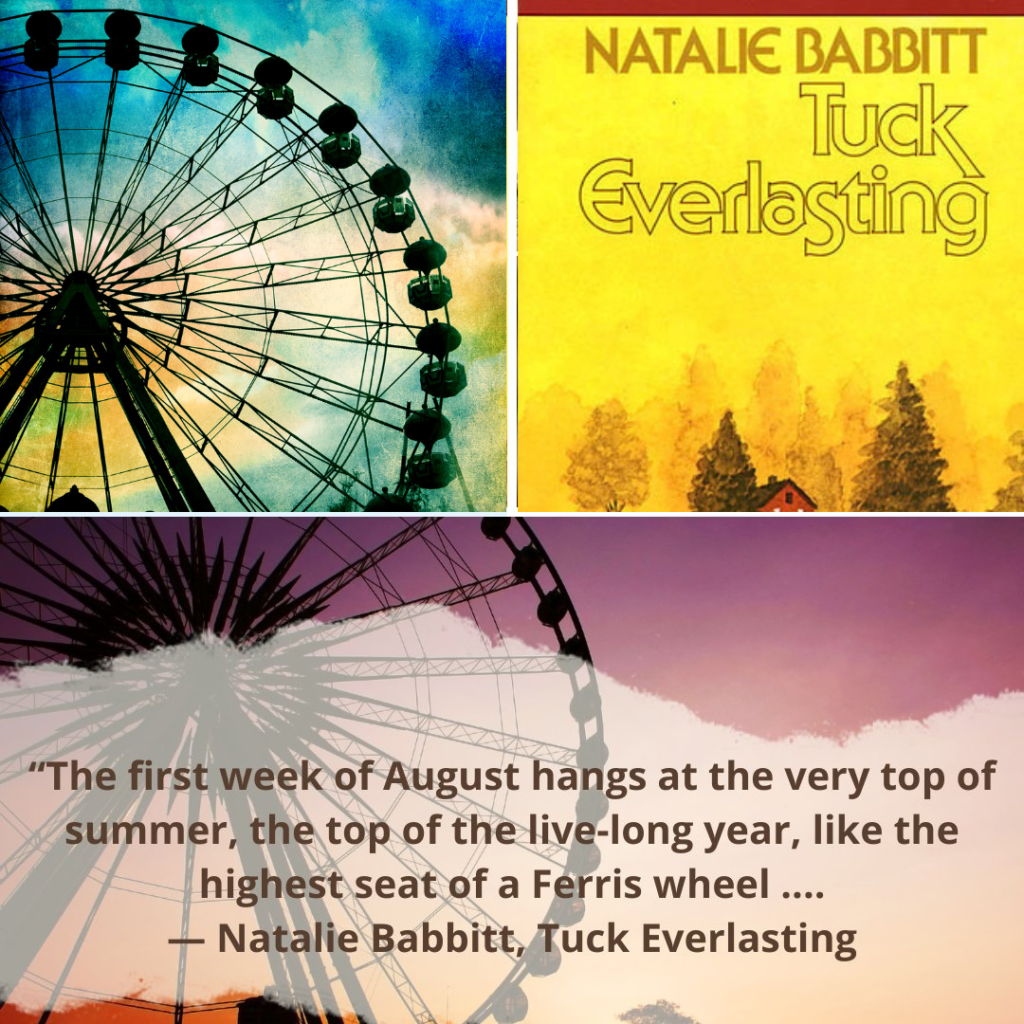
Tuck Everlasting
Prologue
“The first week of August hangs at the very top of summer, the top of the live-long year, like the highest seat of a Ferris wheel when it pauses in its turning. The weeks that come before are only a climb from balmy spring, and those that follow a drop to the chill of autumn, but the first week of August is motionless and hot. It is curiously silent, too, with blank white dawns and glaring noons, and sunsets smeared with too much color.” Babbitt, Tuck Everlasting
Within five words of the book’s beginning, Babbitt alludes to the months of the year and compares the calendar to a Ferris wheel. In doing so, Babbitt has established one of the themes of Tuck Everlasting.
Seasons of the Year as Literary Symbols
Babbitt begins the book by mentioning the month of August, which is a month that lands at the end of summer–just before the beginning of fall. In literature, seasons are often symbolic.
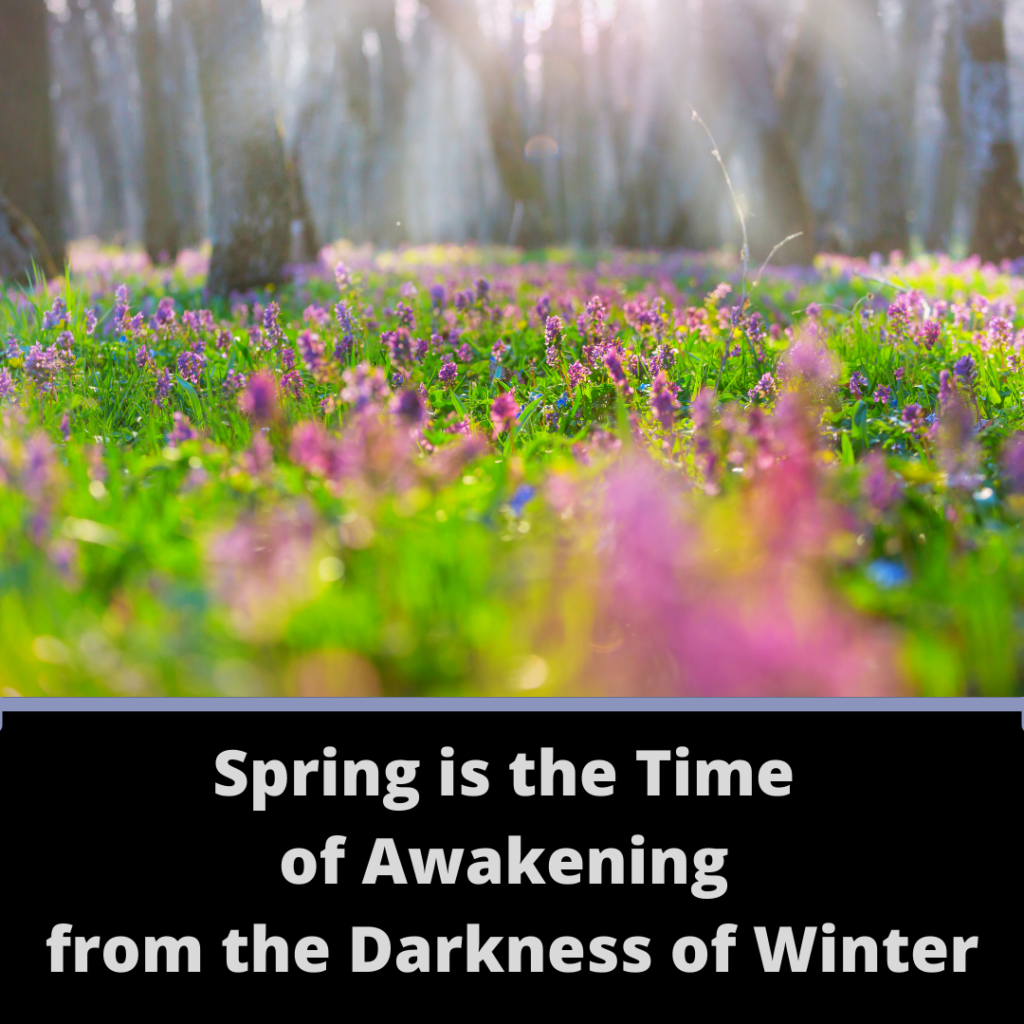
Spring is often symbolic of childhood, summer is the time of youth and young adulthood.

It is a time of hot, pulsating energy.

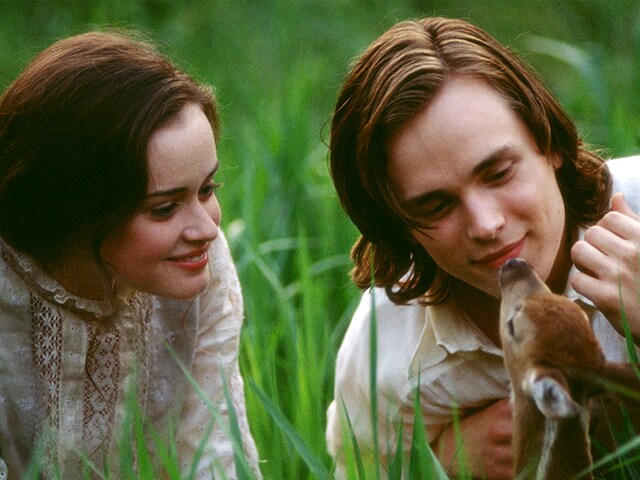
In Tuck Everlasting, Winifred is in the summer of her life. Jesse appears to also be in the summer of his life, too, but he is not, and therein, the plot thickens.
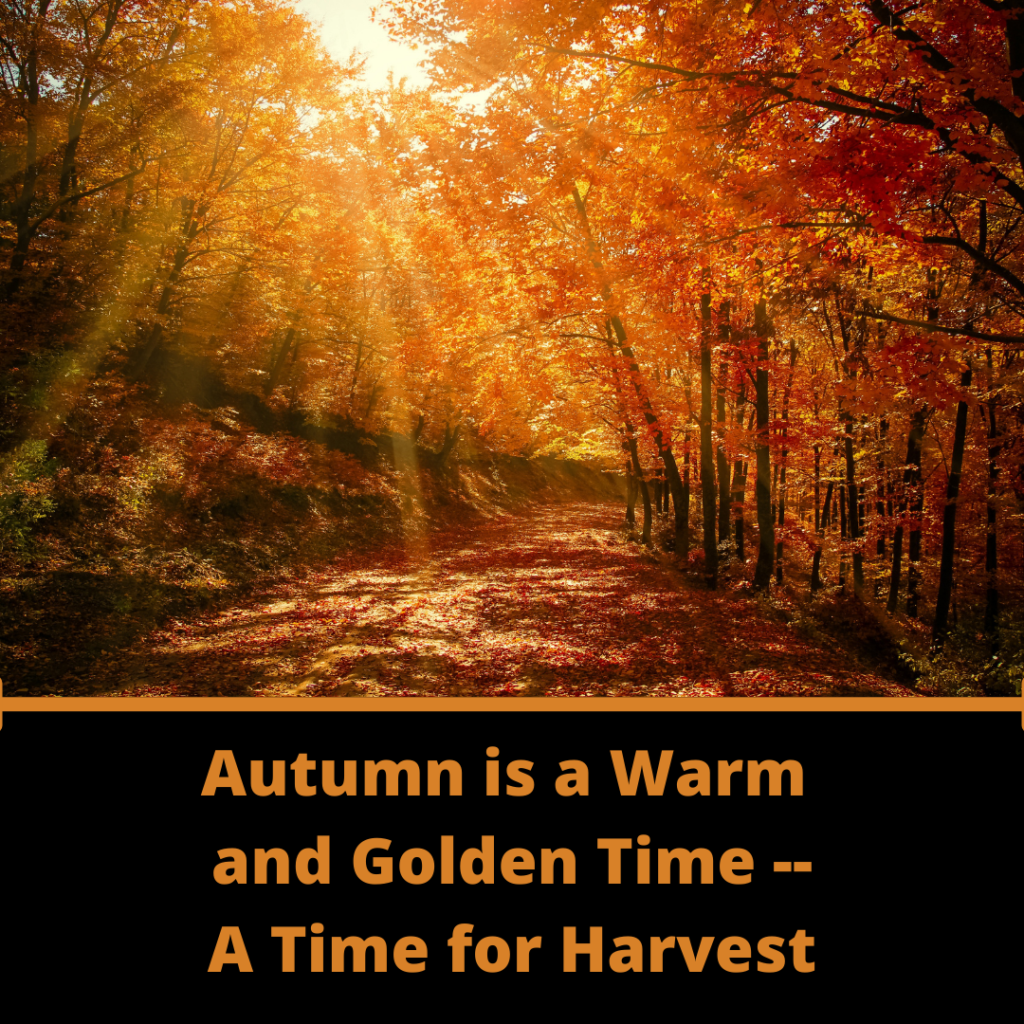
Symbolically, autumn is near the end of a person’s life. It is a slower, more golden time. It is a time for reflection and harvest. Mae and Tuck are trapped in time during the early autumns of their lives.
“The first week of August hangs at the very top of summer, the top of the live-long year, like the highest seat of a Ferris wheel when it pauses in its turning.” Natalie Babbitt
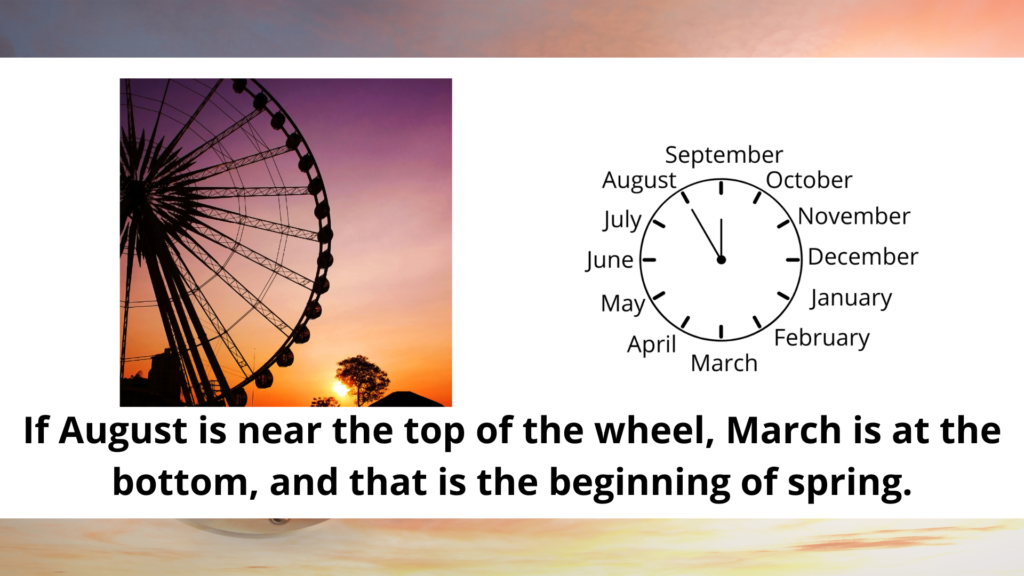
In her own words, Babbitt says that August is NEAR the top of the Ferris wheel.
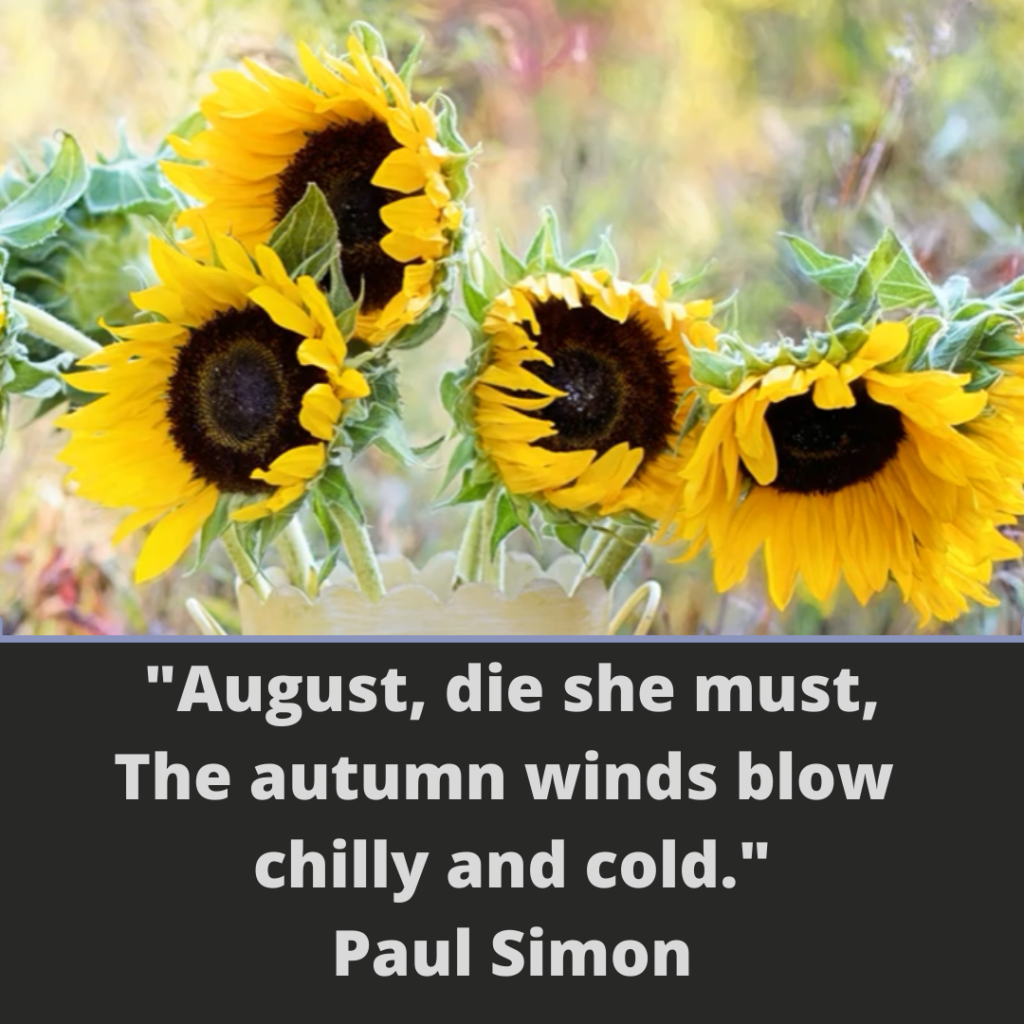
August is the time just before the winds will begin to “grow chilly and cold.”
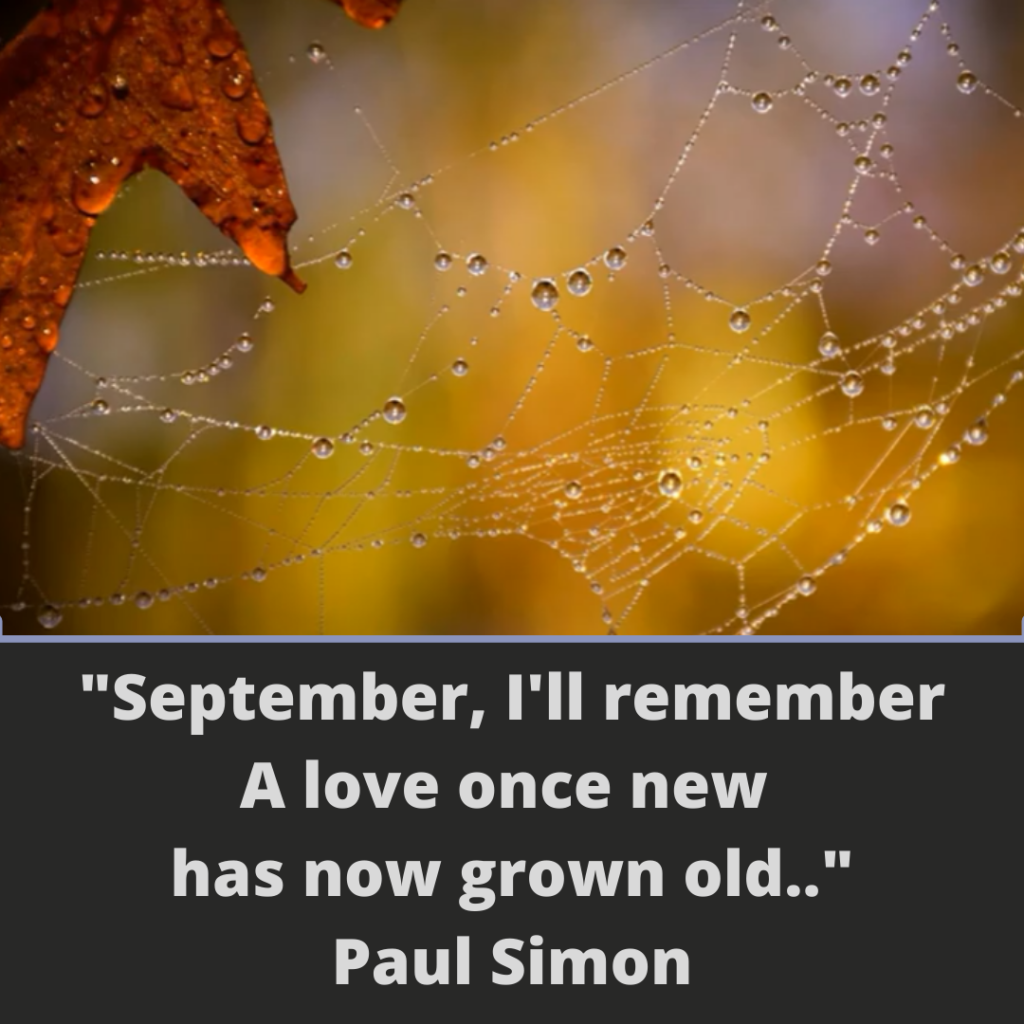
In terms of humanity’s internal clock, September is just before midnight. In terms of a calendar, September is the beginning of the end of the year. When the months are referenced in literature, they usually allude to something about the lives of the people within the literary wor. Tuck Everlasting is a story that takes place during August, and no doubt, Babbitt set the book at that time for a reason.

The Tucks are not typical humans, and their Ferris wheel rides will never complete themselves. The Tucks will never face Winter. Yet, Winifred is a typical human, and her Ferris wheel is destined to cycle full circle.

The Journey in Literature
Also in the Prologue, Babbitt mentions Mae’s journey.
“At dawn, Mae Tuck set out on her horse for the wood at the edge of the village of Treegap. ”
In the above sentence, we might discern that Mae has set out on a literary journey:

Dawn
Mae sets out on her journey at dawn, which signifies that this is an enlightened journey of some sort. In terms of the symbols of night and day, the beginning of Mae’s journey Is not dark or foreboding., but it is a hero’s journey, and the Tucks will face danger and conflict.
The Wood or Nature as a Theme in Tuck Everlasting
At dawn, Mae Tuck set out on her horse for the wood at the edge of the village of Treegap. ”
It is significant that Mae sets out for the wood–or for nature, which is another symbol or theme in literature.
“The road that led to Treegap had been trod out long before by a herd of cows who were, to say the least, relaxed. It wandered along in curves and easy angles, swayed off and up in a pleasant tangent to the top of a small hill, ambled down again between fringes of bee-hung clover, and then cut sidewise across a meadow. Here its edges blurred. It widened and seemed to pause, suggesting tranquil bovine picnics: slow chewing and thoughtful contemplation of the infinite. And then it went on again and came at last to the wood….” Natalie Babbitt, Tuck Everlasting
“But on reaching the shadows of the first trees, it veered sharply, swung out in a wide arc as if, for the first time, it had reason to think where it was going, and passed around.
In summary, during the prologue of Tuck, Natalie Babbitt has shown us that the book Tuck Everlasting will be a significant read. She has shown us that the writing is literature and that it is symbolic and filled with literary themes. The prologue of Tuck Everlasting contains 299 words, and because of Babbitt’s skillful writing, those 299 words are epic.
Chapter 1
The shadows suggest another literary theme in Tuck Everlasting:
Winifred’s House in Tuck Everlasting is NOT in the same kind of Wood as that where the Tucks live. There is an iron fence around Winifred’s house. This is another use of symbolism. What is the significance of the spiked iron fence?
“There was something strange about the wood. If the look of the first house suggested that you’d better pass it by, so did the look of the wood, but for quite a different reason. The house was so proud of itself that you wanted to make a lot of noise as you passed, and maybe even throw a rock or two. But the wood had a sleeping, otherworld appearance that made you want to speak in whispers. This, at least, is what the cows must have thought: “Let it keep its peace; we won’t disturb it.”
Description of Mae Tuck
“Mae sat there frowning, a great potato of a woman with a round, sensible face and calm brown eyes.”
[In the movie, Mae is played by Sissy Spacek, who is NOT a potato of a woman.]
“Mae Tuck climbed”d out of bed and began to dress: three petticoats, a rusty brown skirt with one enormous pocket, an old cotton jacket, and a knitted shawl which she pinned across her bosom with a tarnished metal brooch.”
What do the following words tell us about the relationship between Mae and her husband?
“The sounds of her dressing were so familiar to Tuck that he could say, without opening his eyes, “You don’t need that shawl in the middle of the summer.”
The Music Box
“Mae sat on the edge of the bed and pulled on a pair of short leather boots so thin and soft with age it was a wonder they held together. Then she stood and took from the washstand beside the bed a little square-shaped object, a music box painted with roses and lilies of the valley. It was the one pretty thing she owned and she never went anywhere without it. …
“Then, last of all, she pulled down over her ears a blue straw hat with a drooping, exhausted brim.”
[Why did Babbitt describe Mae’s hat as drooping and exhausted?]
“But, before she put on the hat, she brushed her gray-brown hair and wound it into a bun at the back of her neck. She did this quickly and skillfully without a single glance in the mirror. Mae Tuck didn’t need a mirror, though she had one propped up on the washstand. She knew very well what she would see in it; her reflection had long since ceased to interest her. For Mae Tuck, and her husband, and Miles and Jesse, too, had all looked exactly the same for eighty-seven years.”
The Toad and the Gnats
“It [the toad] was the only living thing in sight except for a stationary cloud of hysterical gnats suspended in the heat above the road. …tossing pebbles at such an angle that they passed through the gnat cloud on their way to the toad. ”
[How does Babbitt’s use of description of the gnat cloud tell you about more than just about the gnats and the toad?]
[What do the following words suggest about Winnie?]
“…thrusting her arms through the bars of the fence and plucking at the weeds on the other side.”
[What do the following words suggest about Winnie?]
“”I’m not exactly sure what I’d do, you know, but something interesting—something that’s all mine. Something that would make some kind of difference in the world. It’d be nice to have a new name, to start with, one that’s not all worn out from being called so much. And I might even decide to have a pet. Maybe a big old toad, like you, that I could keep in a nice cage with lots of grass…”
[Focus on the words “cage” and “with lots of grass” and dig deeper into what that passage means. The answer to this question is near the bottom of Chater 3]
Chapter 4 – The Stranger appears at Sunset
“At sunset of that same long day, a stranger came strolling up the road from the village and paused at the Fosters’ gate.”
[In terms of the Night versus Day symbols, what does the word “sunset” suggest about the stranger who has appeared and how he will affect the story?]
[In terms of the Night and Day imagery, how might it be significant that Winnie was chasing “fire” flies?]
Description of the Stranger
“He was remarkably tall and narrow, this stranger standing there. His long chin faded off into a thin, apologetic beard, but his suit was a jaunty yellow that seemed to glow a little in the fading light. A black hat dangled from one hand, and as Winnie came toward him, he passed the other through his dry, gray hair, settling it smoothly.”